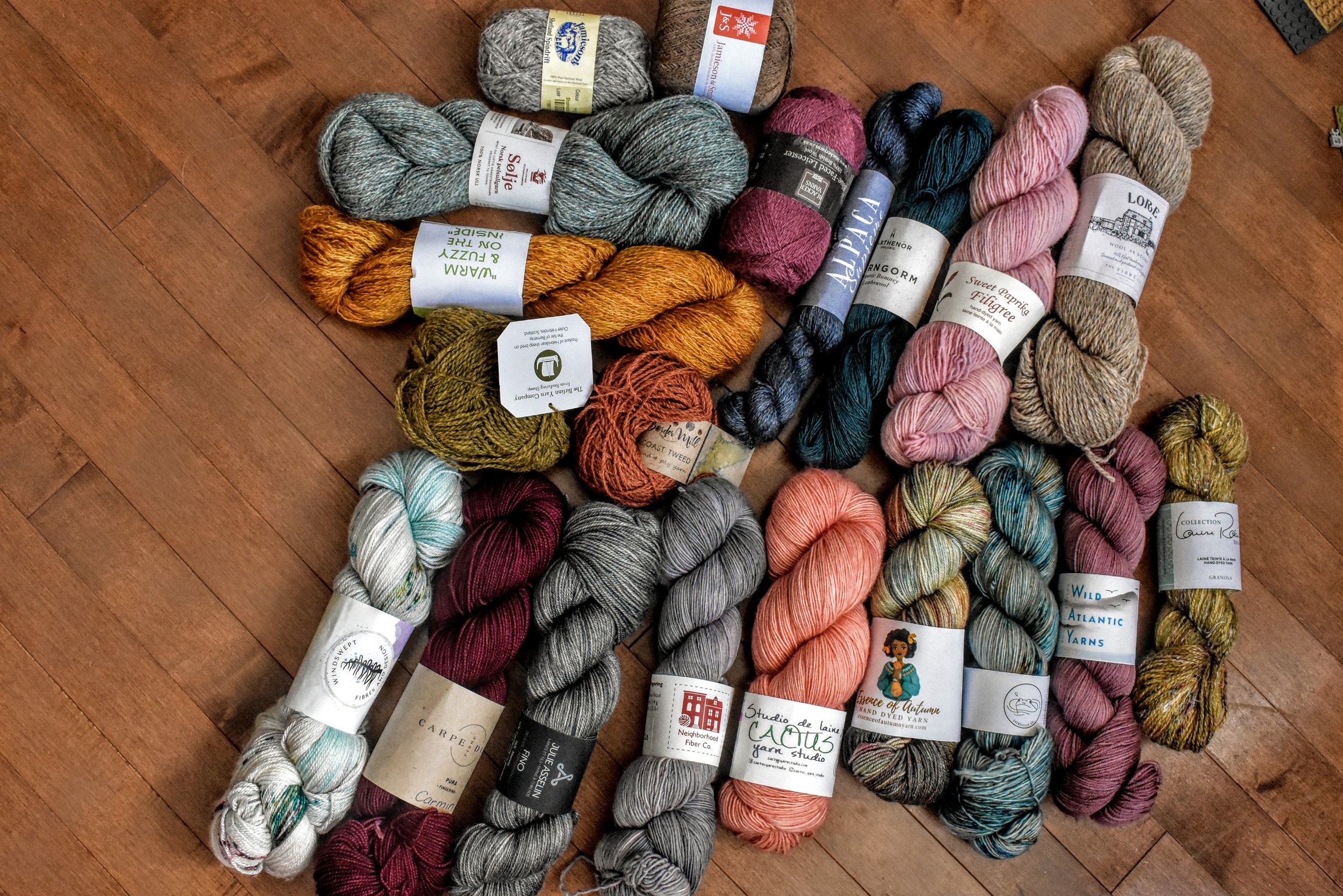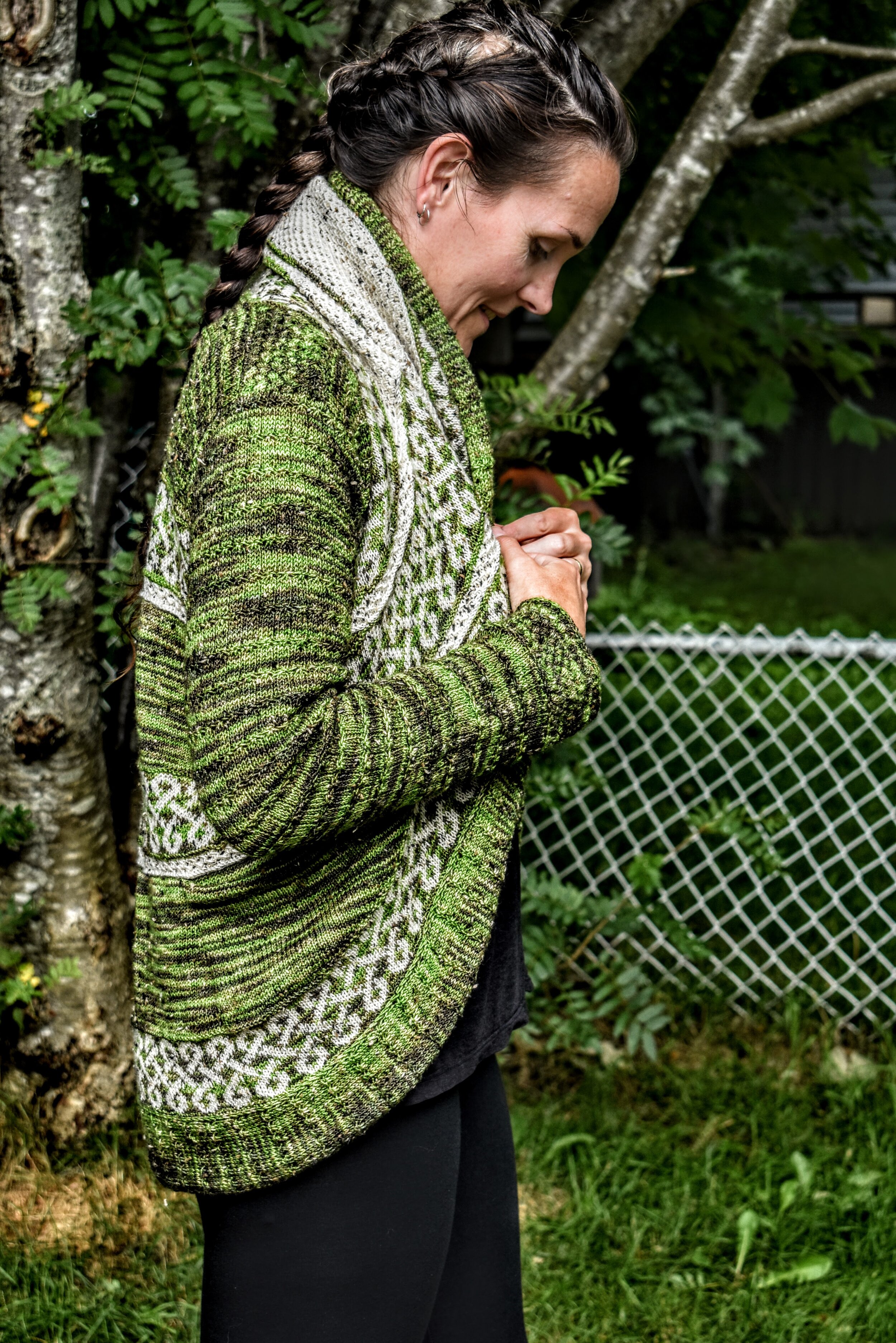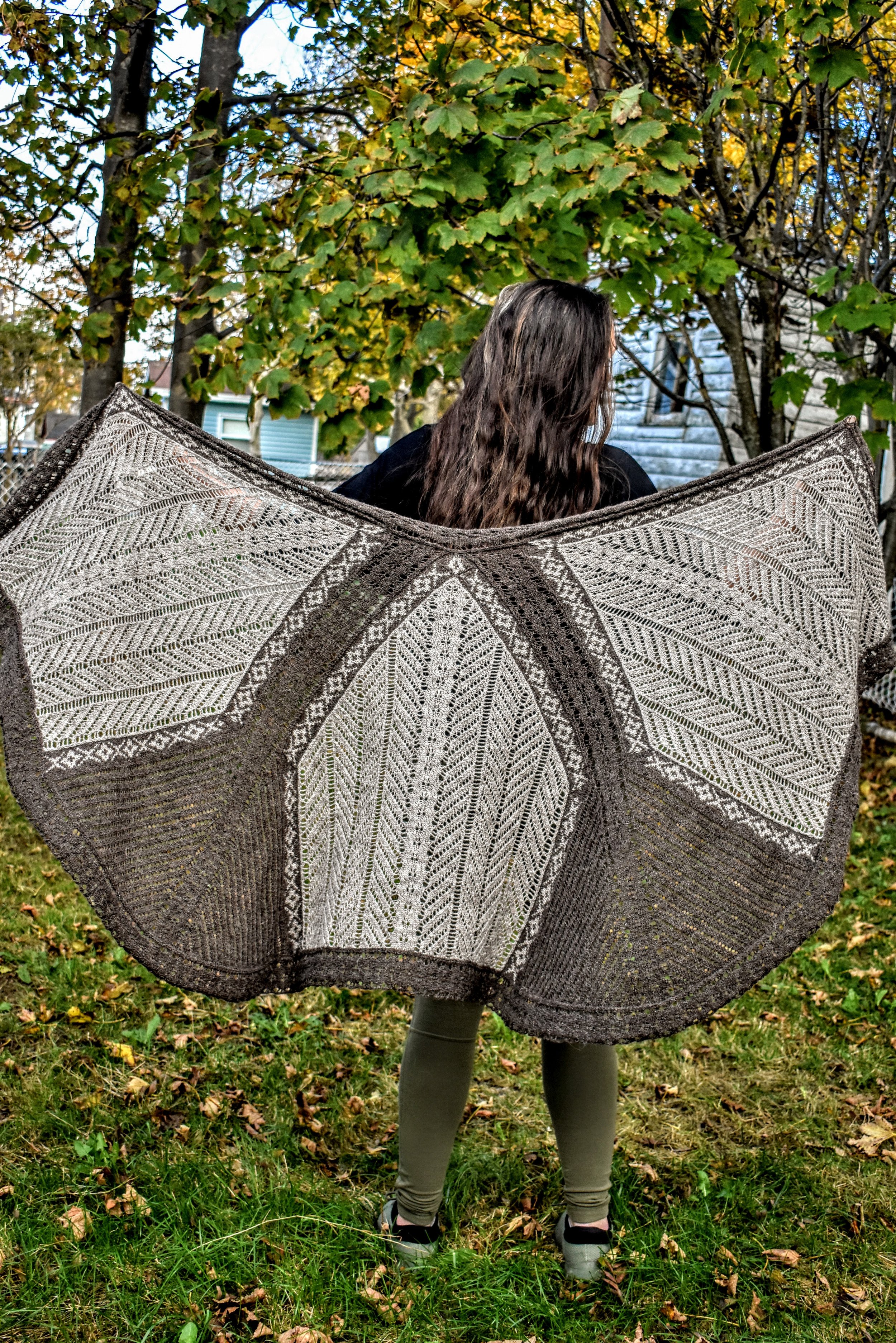What’s your yarn type?
I am definitely varied in my yarn love! Fibre-focused in the top half and hand-dyed in the bottom half. Some knitters prefer fibre-focused yarns that show off the fibre characteristics, and some love hand-dyed yarn that showcase colour variation and colour play. Rustic, soft, animal based, plant based, superwash, non-superwash, woollen-spun, worsted-spun, I love them all in their own way. Some knitters have a type of yarn that they almost never deviate from using. And some designers too. And it usually fits in with their knit or design style. This has been on my mind a lot lately — I don’t have a favourite yarn type and I’ve always felt a little self-conscious about this!
I’ve designed with woolly wools, soft wools, hand-dyed, and hand-dyed with speckles galore. And each time I wonder what other knitters will think about my yarn choice. Am I turning a knitter off because I’m not sticking to a range of yarns that they love? Am I disappointing them? Am I getting their hopes up that by using a yarn type more frequently for a little while, that I might start using it exclusively from now on? Are knitters expecting me to use only certain yarns? Only rustic, only hand-dyed? Each time I start something new, these questions are always there in my head. A lot of other designers tend to stick to certain types of yarn, catering to a specific crowd. But I’m all over the place with yarn. I love them all.
For Ireland’s Eye (photo below), I used Wild Atlantic Yarns Dún na nGall sock (85% Superwash Blue-Faced Leicester / 15% Donegal Nep in the colourway “The Forest Floor”. A hand-dyed and variegated superwash, and it was pure delight designing this and knitting this using this yarn. It was early January, 2019 while scrolling through Instagram when a photo of this “The Forest Floor” colourway popped up with the countryside of Northern Ireland as a backdrop. It was mesmerising. Obsessed. Ever since stumbling upon that photo, I’m addicted to using the hand-dyed beauties from Wild Atlantic Yarns. And hand-dyed beauties from amazing yarn dyers everywhere.
Then for Exploits Valley (photo below), I used Blacker Yarns St. Kilda (100% Boreray/Soay blend), minimally processed, completely natural and un-dyed (Isle of Dún and Stac Lee). After reading about the history of St. Kilda, I had to buy this yarn and save it for something special. It sat neatly in my bin for a year and every weekend I would take it out and wonder if it was the right time for it — whatever “it” was. It was early June, 2020 and I was trying to mentally come to terms with the fact that Basil was going to have his third open heart surgery, 3,000 kilometers away from home, in the middle of the pandemic, in the heart of Toronto, and that I was going to be the only one there with him since Steve had to stay home because of the covid restrictions and we couldn’t afford a hotel for that long. So I spontaneously wound my precious St. Kilda skeins into balls and just started knitting. Knitting blindly and without a plan. That spontaneous knitting was a swatch that turned into this magical hap. This yarn brought me exactly what I needed at the time. I felt like I was knitting with something ancient, pure, and unworldly, and focusing on making something unknown, taking my mind off the unknown. The feeling and quality of this yarn held me in a rapture. Yarns that focus on the fibre have a special magnetism.
So I get completely obsessed with natural yarns and hand-dyed yarns. And most of the time, at the exact same time! Every knit is my favourite knit at the time of knitting and designing, no matter what the yarn type. So I’ll just keep doing what I’m doing, sometimes using a super speckled superwash, and sometimes using an minimally processed wool. And I’ll keep wondering what you are all thinking about yarn choices too :)
xo- Jennifer (Mar 23, 2023)


